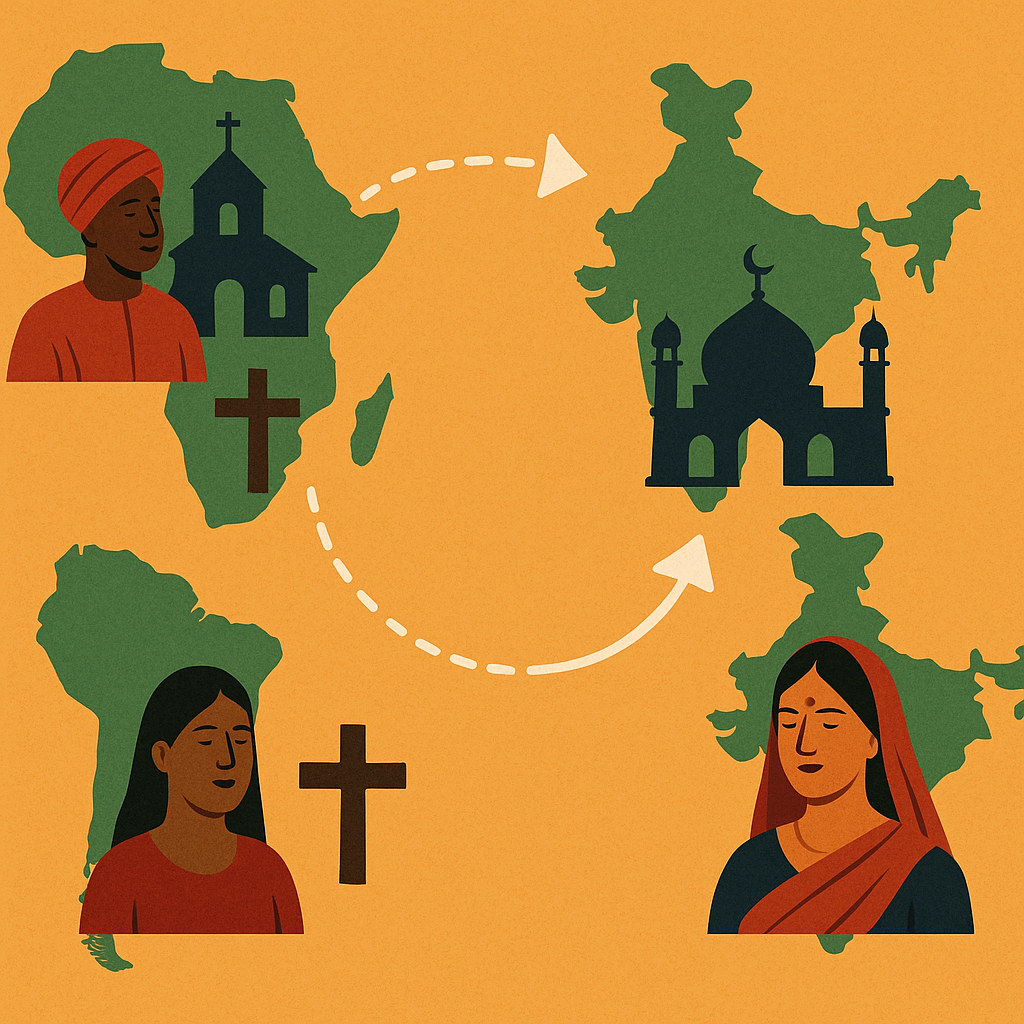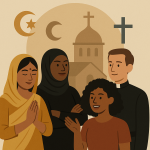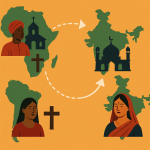Global Faith Trends and Local Impact: What India Learns from Africa and Latin America
In a rapidly globalizing world, spirituality and religion are no longer confined within borders. The way faith evolves in one continent often influences others — through ideas, practices, and shared experiences of transformation. In recent years, Africa and Latin America have emerged as vibrant laboratories of faith, blending traditional beliefs with modern outreach, technology, and social impact. India, with its deep spiritual heritage and diversity, finds valuable lessons in these evolving global faith trends — lessons that highlight renewal, inclusivity, and the role of religion in addressing modern challenges.
The New Face of Faith Movements
Across Africa and Latin America, religious and spiritual movements are not limited to rituals or worship; they are deeply engaged in social change and community development. Churches, temples, and spiritual centers often double as educational institutions, healthcare providers, and community hubs. In many African nations, faith organizations lead campaigns for women’s empowerment, microfinance, and climate action. Similarly, in Latin America, faith-based groups are deeply involved in peacebuilding, indigenous rights, and poverty reduction.
For India, where spiritual organizations already hold immense social influence, this approach offers a vital reminder: faith can be a driver of social transformation when it aligns moral guidance with practical service. Indian faith leaders are increasingly adopting this model — from rural education programs by Hindu ashrams to interfaith climate action by Buddhist and Sikh groups.
Blending Tradition with Modern Communication
Another striking trend in Africa and Latin America is the creative use of modern media to spread spiritual messages. Pastors in Nigeria livestream their sermons; spiritual teachers in Brazil use YouTube and WhatsApp to reach millions. These leaders are not afraid to adapt their message to new platforms while staying rooted in ancient wisdom.
India’s spiritual landscape — already active on digital platforms — can deepen its impact by learning from this openness to innovation. Virtual satsangs, spiritual podcasts, and multilingual digital scriptures are helping Indian faith leaders connect with younger audiences. The key lesson: modernization does not mean dilution — when done mindfully, it makes spirituality more accessible and relatable.
Community Over Individualism
A powerful undercurrent in African and Latin American spirituality is the sense of collective identity. Faith is not seen as a private act but as a shared journey. Festivals, rituals, and congregations focus on unity, forgiveness, and mutual support. This communal spirit has helped societies withstand economic hardship and political instability.
India, too, has ancient traditions of community-centered worship — from village temples to langars and satsangs. However, urbanization and digital life have made faith increasingly individualistic. By observing the community-centered spirituality of Africa and Latin America, India can renew its own sense of “sangha” — collective spiritual fellowship, reminding people that the divine is also found in human togetherness.
The Rise of Youth-Led Faith Movements
In both Africa and Latin America, youth-driven religious renewal is one of the most inspiring trends. Young people are redefining faith in creative, activist, and globally connected ways — mixing tradition with environmentalism, social justice, and music. This “spiritual entrepreneurship” transforms worship into action.
In India, young voices are also reshaping the spiritual narrative — through meditation apps, eco-temple projects, and volunteer movements like Art of Living’s youth wing or Isha Foundation’s Cauvery Calling. The global message is clear: young people want spirituality that speaks to their reality — meaningful, inclusive, and active.
Interfaith Collaboration as a Social Tool
Both Africa and Latin America have witnessed significant interfaith collaborations — between Christians, indigenous traditions, and new spiritual movements — to promote peace and social harmony. They recognize that in the modern world, cooperation among faiths is essential for stability.
India, a land of immense religious diversity, can build on this global lesson by fostering more grassroots interfaith projects — not just dialogue at elite levels but shared action for the environment, education, and poverty alleviation. The aim is to show that faith diversity is not a challenge but a collective strength.
Lessons on Inclusivity and Equality
A notable transformation in these regions is how faith institutions are addressing issues of gender and inclusivity. Many African churches now have women bishops; in Latin America, spiritual circles often blend indigenous and feminine spiritual practices, reclaiming balance.
For India, which continues to debate gender equality in places of worship, these movements offer a bold example: spiritual progress must include social equality. A faith that empowers everyone becomes a source of national strength.
The Local-Global Connection
Perhaps the biggest takeaway for India is how local traditions can go global without losing their roots. African gospel music, Latin American liberation theology, and indigenous healing traditions have all inspired global audiences. Likewise, India’s yoga, meditation, and spiritual festivals attract millions abroad. The key is to maintain authenticity while being open to dialogue. India can continue sharing its wisdom — but also listen and learn from other continents’ experiments in renewal. Global faith trends from Africa and Latin America show that spirituality today is not about dogma but about connection, compassion, and community resilience. Religion in these regions acts as both a spiritual and social force — empowering people, protecting nature, and uniting communities.
For India, the lesson is profound: its rich spiritual heritage must evolve with the times — embracing technology, inclusivity, and global cooperation while staying rooted in dharma and seva.
~Religion World Bureau









